Harmas KGV
The permanent art installation in public space, Harmas KGV, was created as part of the long-term project Neue Nachbarn (New Neighbours), initiated by the Kunsthaus Dresden as part of Dresden’s application for the title of European Capital of Culture 2025. The project was opened on 10 October 2020.Location: Parzelle 3, Kleingärtnerverein Flora I e.V., Bergmannstraße 39, 01309 Dresden-Striesen
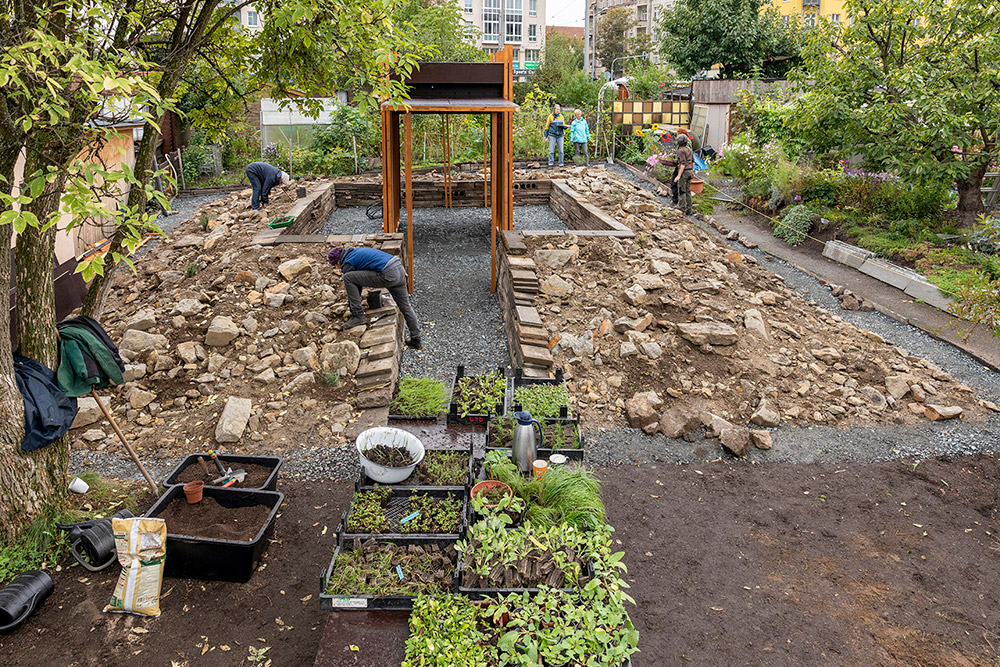 1
1
Harmas KGV is a model plantation with twenty highly endangered native wild herbs. The area of Parzelle 3 (Plot 3), an outpost of the Kunsthaus Dresden, has a stone fill with local sand-limestone that rises up toward the centre. In the centre of the site is an event area with a pavilion designed by Constructlab. Concrete scraps accumulated in Flora 1 were used to construct a dry stone wall.
Collaboration partners: Botanical Garden of TU Dresden (outpost Boselgarten), Environmental Agency of the State Capital Dresden, Kleingärtnerverein Flora I e.V., ARTENREICH Naturnahe Gartengestaltung Sabine Kroehs, Mittwochsmaler (painting group of the allotment gardens Leubnitzer Höhe), Garten- und Landschaftsbau GalaBau, Umweltzentrum Dresden e.V., Dresdner Gartenfreunde e.V., Constructlab
Harmas
Jean-Henri Fabre, the famous French entomologist of the late 19th century, a pioneer of behavioural research who corresponded with Charles Darwin, among others, writes in the chronicle of his life's work “Souvenirs Entomologiques” (Memoirs of an Entomologist), which he published between 1879 and 1907: “I would like to speak of the piece of land which, according to my long-cherished plan, is to become a laboratory for living entomology, of the piece of land which I have now finally obtained in the solitude of a small village. It is a ‘harmas’. That’s what they call stony fallow land, overgrown with thyme here.” With the Harmas, Fabre realized his dream in 1879 of creating an insect paradise where he could observe insect behaviour undisturbed and without having to walk long distances. Today, Harmas de Fabre is open to the public as part of the French National Natural History Museum.
Fabre’s remarkable attitude towards even the smallest of his fellow animal and plant creatures becomes clear in a paragraph of his writings addressed to his colleagues in laboratory science: “And then, my beloved insects: if you cannot convince these good people because you do not have the needed force of boredom, then I tell them: you slash the animal, I study it alive; you make of it an object of disgust and pity, I make it lovable; you work in a workshop where torture and dismemberment take place, I watch under a blue sky as the cicadas sing; you treat cell and protoplasm with chemicals, I study instinct in its most sublime forms; you study death, I study life.” In Fabre’s time, there was still plenty of intact nature in the countryside – the cities, on the other hand, offered comparatively little chance for plants and animals to develop.
Today, this situation has almost been reversed: due to land consolidation, widespread monoculture and the use of pesticides, the habitat for many animals and plants in the countryside is becoming smaller and green cities have become refuges. Allotment garden culture also has a considerable share in this. From an ecological point of view, allotment gardens, like botanical gardens, function as remaining sanctuaries of biodiversity.
The Harmas KGV project in plot 3 of the KGV Flora I e.V. aims to use and promote this potential of allotment gardens through the creation and joint care of an arid biotope with native flora and to counteract the loss of species knowledge. It opens up a place where we can observe our “fellow animal and plant creatures” in Fabre's sense, “with loving enthusiasm and a thirst for knowledge”.
Substrate
Pläner sandstone or gaize, a calcareous sandstone sediment from the Cretaceous period, is found in deeper geological layers in the urban area of Dresden. The substrate on which the Flora I e.V. allotment garden site is located is made up of approximately the following structure: a layer of two to three metres of sandy clay followed by a layer of four to five metres of Elbe gravel. Immediately below this is the groundwater; from a depth of 18 metres, the relics of a Cretaceous sea can be found that covered the whole of Europe 90 to 100 million years ago. The Pläner layer in the Dresden urban area can be up to 18 metres thick. While preparing the fill at Harmas KGV, a fossil was found – reflecting how the calcareous components of the rock were formed by the deposition of skeletons of cretaceous creatures. Former quarries on the southern edge of Dresden bear witness to the fact that Pläner sandstone was extracted as building material. The Pläner used for the project derives from the Erlweinscher Amtsschlachthof (part of the official slaughterhouse built in 1908), when parts of the stables were demolished in 2018. Today, a Dynamo Dresden performance sports centre is located on the site. Harald Wolf, an employee of the Dresden environmental authority, secured the material in order to use it for ecological enhancement measures such as the construction of lizard habitats. The building rubble was enriched with a clay-sand mixture to provide ideal living conditions for the plants, which are adapted to extreme warmth, dryness and low nutrients. The PH value of the substrate is between 6 and 7.5.
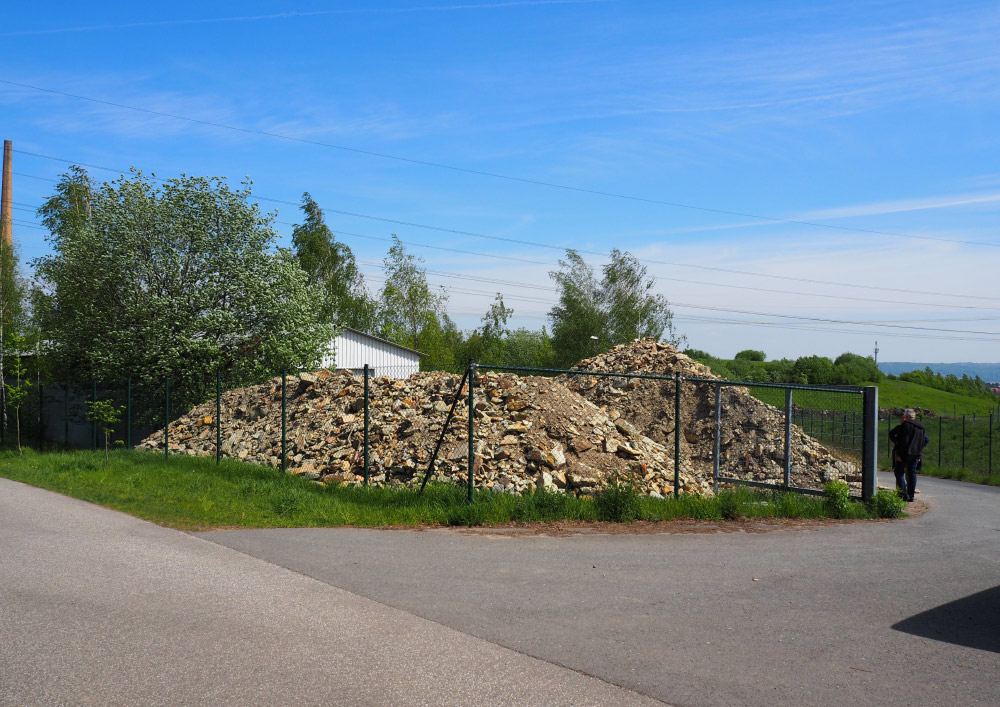 2 Municipal storage space with Pläner sandstone
2 Municipal storage space with Pläner sandstone
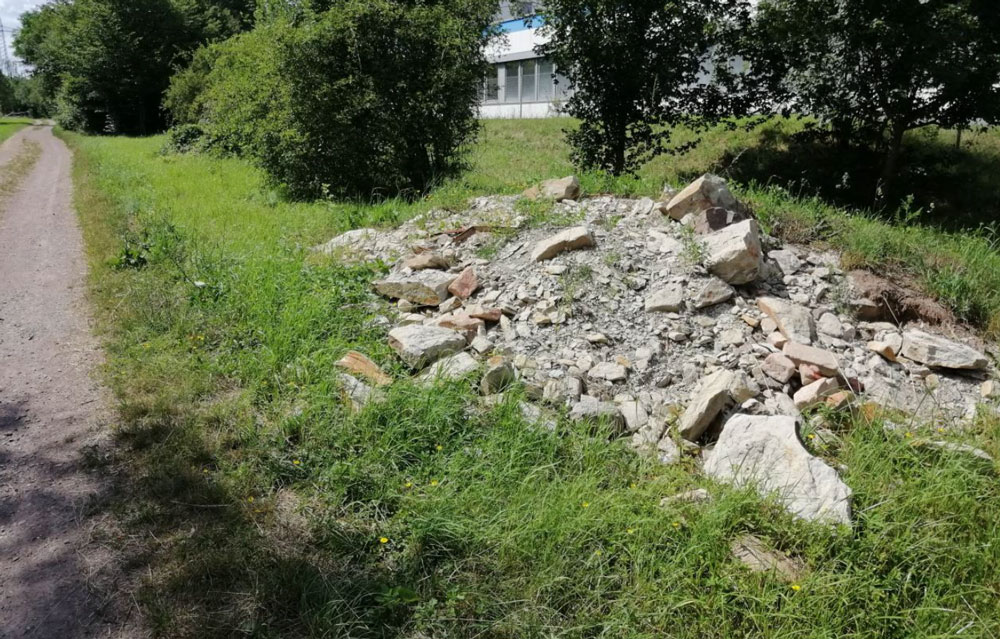 3 Lizard habitat made of Pläner rock, Environmental Agency Dresden
3 Lizard habitat made of Pläner rock, Environmental Agency Dresden
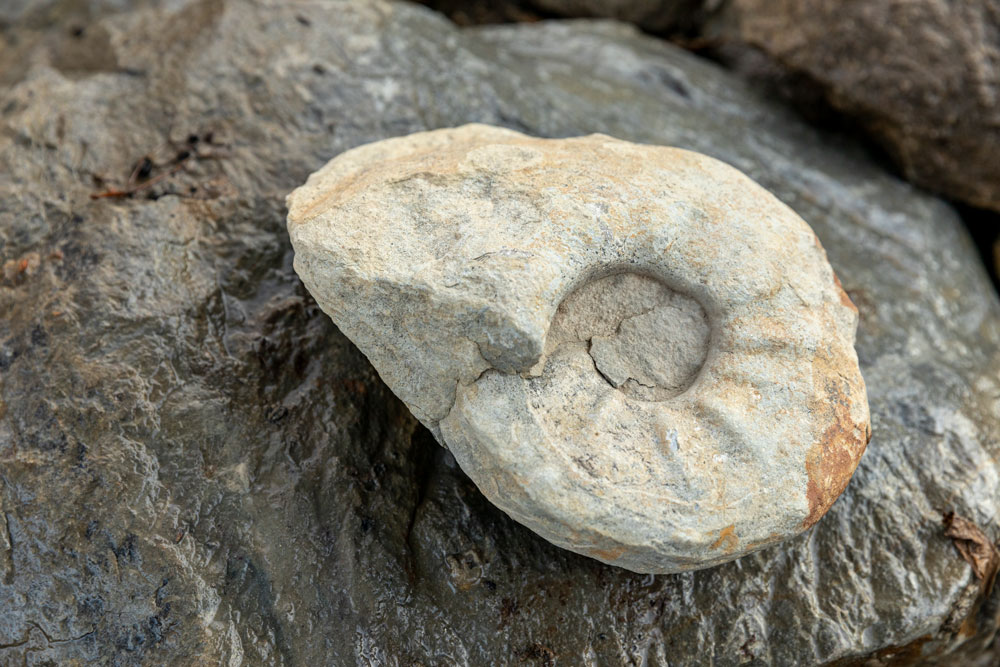 4
4
Microclimate
The dry garden was designed to allow for different atmospheric conditions within a confined space. Depending on the slope and compass direction, different microclimates are created on slopes. Aligned in a north-south direction, the site offers slightly inclined slopes in all four cardinal directions. Significant temperature differences arise between the north side receiving the least solar radiation and the south side with the most sun.
This effect is intensified by the exhibition pavilion emerging at the top and the buildings to the east, which additionally shade the areas with the lower sun exposure.
However, the buildings also provide protection against wind, drying out and cold. During the initial planting, the plants were distributed evenly over all four areas so that the correlation between the microclimate and the growth of the nineteen rare wild plants can be monitored.
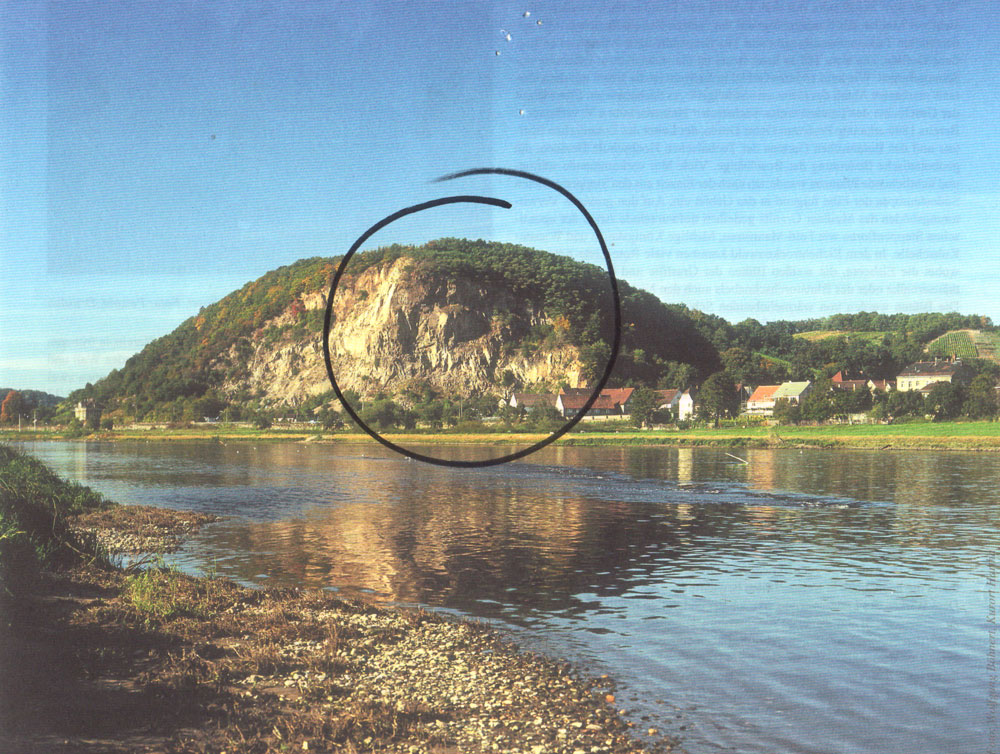 5 The Bosel near Meissen, brochure by Landesverein Sächsischer Heimatschutz e.V.
5 The Bosel near Meissen, brochure by Landesverein Sächsischer Heimatschutz e.V.
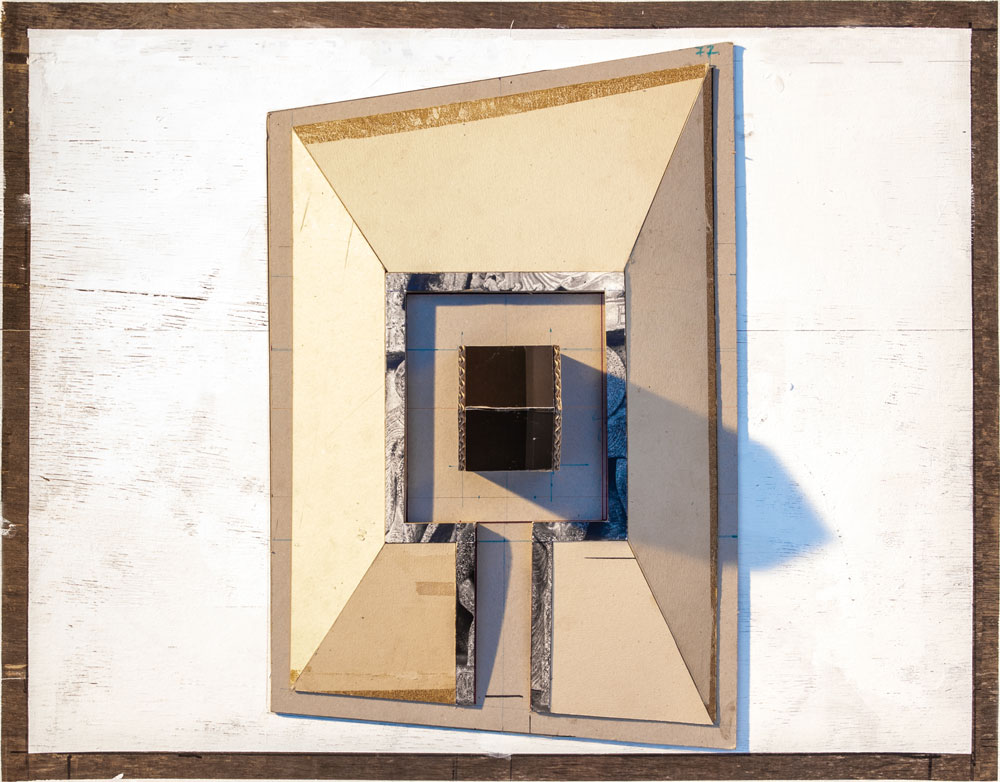 6 In the morning
6 In the morning
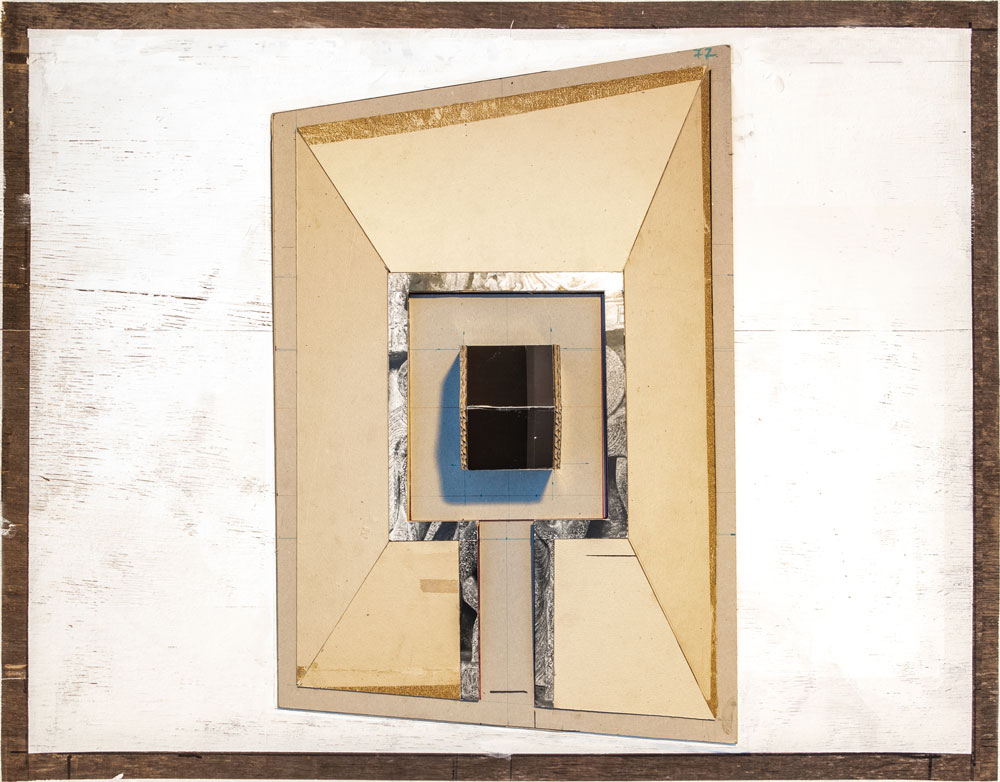 7 At noon
7 At noon
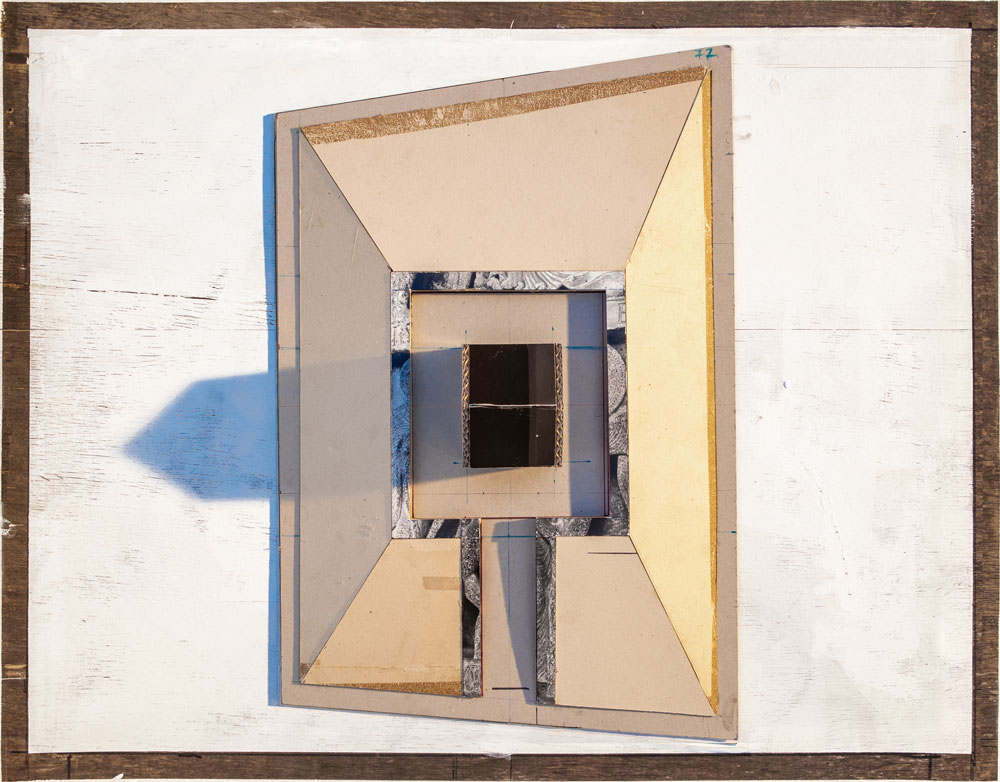 8 In the evening
8 In the evening
Plants
Even before land use was intensified during the last hundred years, the natural conditions for heat-loving plant communities in Saxony existed only on a relatively small scale. This rare situation was exacerbated by the threat to habitats. The species selected for Harmas KGV are all listed in the Red List for Saxony; they have either already been assigned to a threat category or included in the forewarned list for endangered plants. The seeds of the wild plants were harvested in the Boselgarten, a branch of the Botanical Garden Dresden in Coswig near Meissen, and compiled in cooperation with Helga Petzold, director of the Boselgarten.
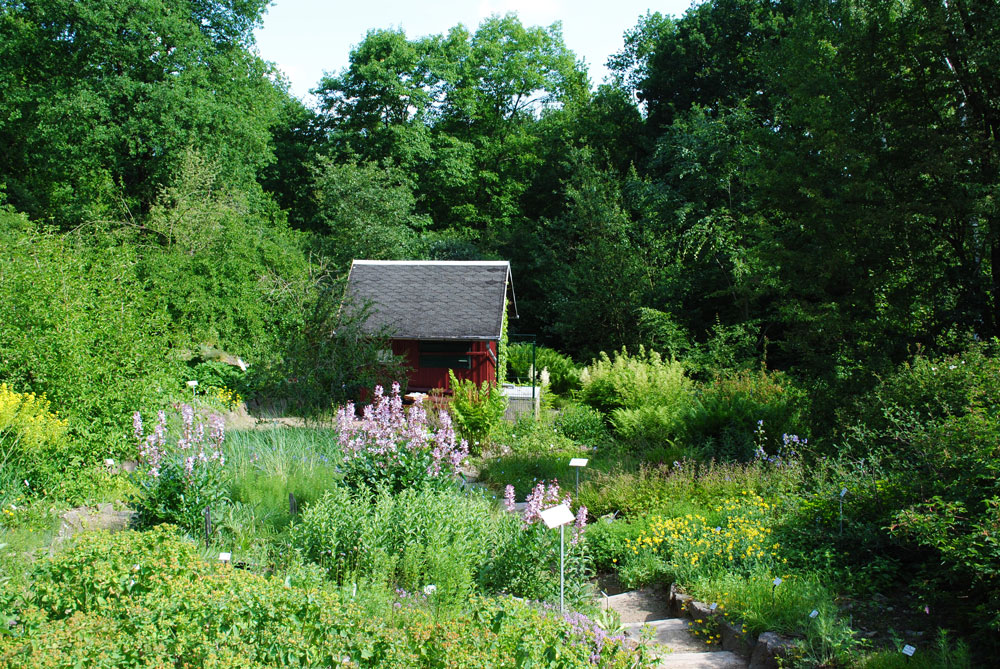 9 The garden on the Bosel, where the seeds originated
9 The garden on the Bosel, where the seeds originated
Species list: (in order of planting):
1. Eryngium campestre (Field Eryngo, Watling Street thistle ), Red List Saxony, category 2
2. Inula hirta (Rough-haired elecampane), Red List Saxony, category 1
3. Artemisia campestris (Field mugwort), Red List Saxony, category 3
4. Drymocallis rupestris (Rock cinquefoil), Red List Saxony, category 1
5. Origanum vulgare (Oregano), potentially endangered
6. Filipendula vulgaris (Fern-leaf dropwort), Red List Saxony, category 2
7. Festuca valesiaca (Volga fescue ), Red List Saxony, category 1
8. Melica transsilvanica (Siberian melic “Red Spire”), Red List Saxony, category 1
9. Briza media (Common quaking grass), Vorwarnliste
10. Scabiosa columbaria (Pigeon’s scabious, pincushion flower), Red List Saxony, category 1
11. Scabiosa ochroleuca (Cream scabiosa, cream pincushions), Red List Saxony, category 3
12. Prunella grandiflora (Self-heal), extinct in Saxony
13. Helianthemum obscurum (ommon rock-rose), Red List Saxony, category 2
14. Salvia pratensis (Meadow sage), Red List Saxony, category 3
15. Allium lusitanicum (Mountain garlic), Red List Saxony, category 1
16. Thymus serpyllum (Breckland thyme, creeping thyme), Red List Saxony, category 3
17. Anthericum liliago (St. Bernard’s lily), Red List Saxony, category 3
18. Acinos arvensis (Basil thyme, spring savory), Red List Saxony, category 2
19. Dianthus carthusianorum (Maiden pink, Carthusian pink), Red List Saxony, category 3
20. Potentilla cinerea (Sand cinquefoil), Red List Saxony, category 1 (cultivation and planting planned 2021/22)
The species list was not compiled with regard to one of the classified plant communities, such as calcareous grasslands, because many of the species can occur in both dry and semi-dry grasslands. Consequently, the presented plant community is a construed one and can be characterized as a warmth-loving plant community on alkaline soil. The species require light and warmth. After taking root, the plants that are very drought-tolerant in view of adaptation processes (e.g. competition), are no longer watered.
In this experimental site, self-settling species are weeded. This reduces the pressure of ecological succession and prevents the threat of scrub encroachment, both general causes of the disappearance of the plants cultivated in the Harmas KGV in the field.
Another consideration in compiling the species list was the future care of the plants by non-professionals, which requires a certain reliability in the growth of the selected plants. A long flowering period was important to ensure that flowers will be found in the dry garden from spring to autumn. Care was also taken to alternate low and cushion-forming plants with taller ones. Some species form very deep roots, others do not.
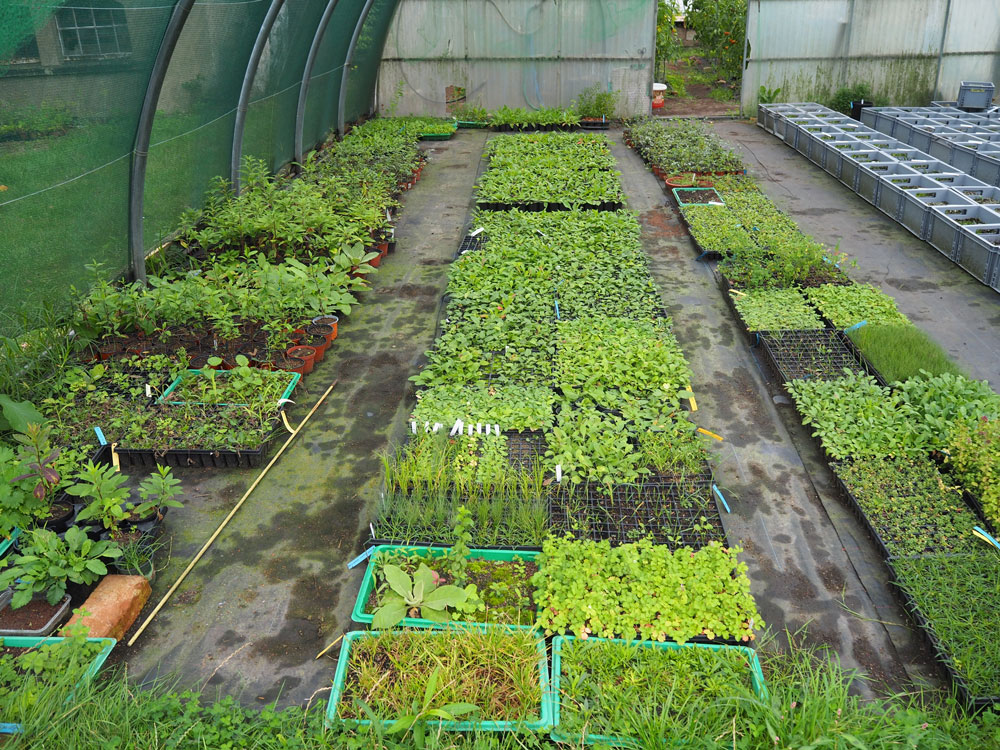 10 Seed trays with seedlings for the Harmas KGV in the project nursery of Umweltzentrum Dresden e.V.
10 Seed trays with seedlings for the Harmas KGV in the project nursery of Umweltzentrum Dresden e.V.
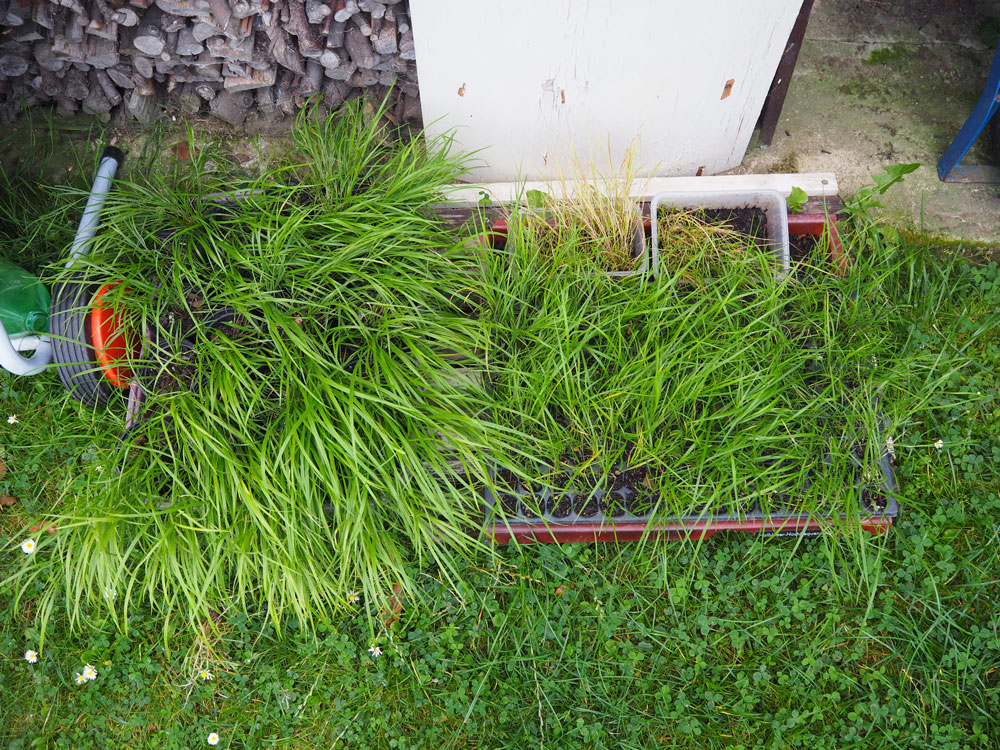 11 Cultivation of pearl grass in the plot of Sylvey and Jürgen Lommatsch, allotment garden association Leubnitzer Höhe e.V.
11 Cultivation of pearl grass in the plot of Sylvey and Jürgen Lommatsch, allotment garden association Leubnitzer Höhe e.V.
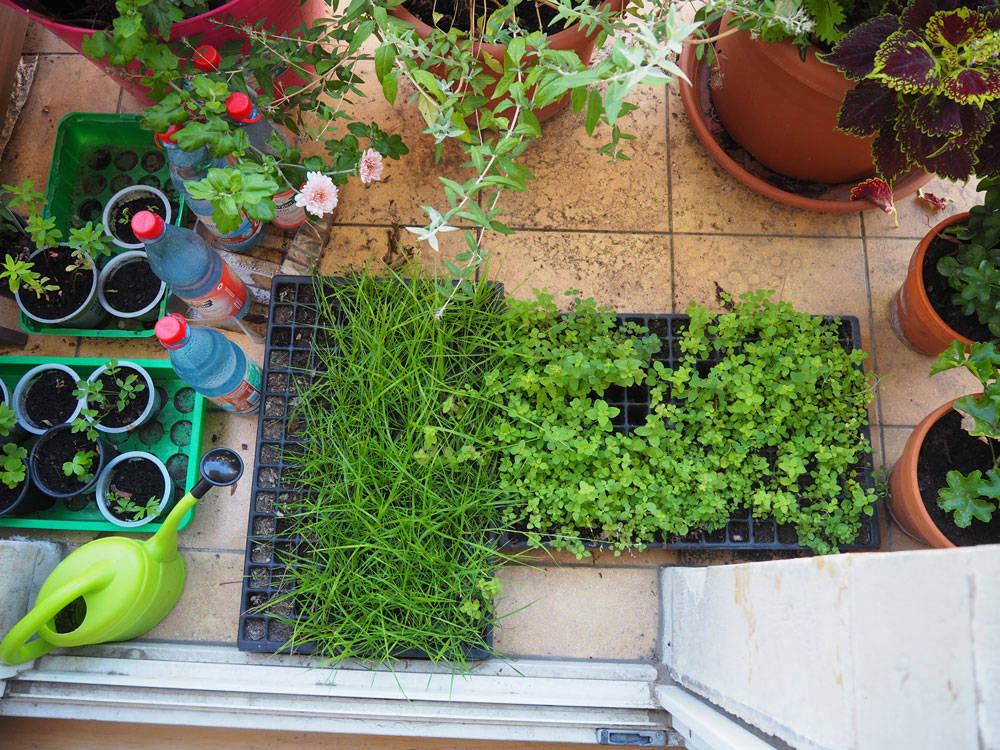 12 Cultivation for Harmas KGV, balcony of Frank Hoffmann, 1st chairman Flora 1 e.V.
12 Cultivation for Harmas KGV, balcony of Frank Hoffmann, 1st chairman Flora 1 e.V.
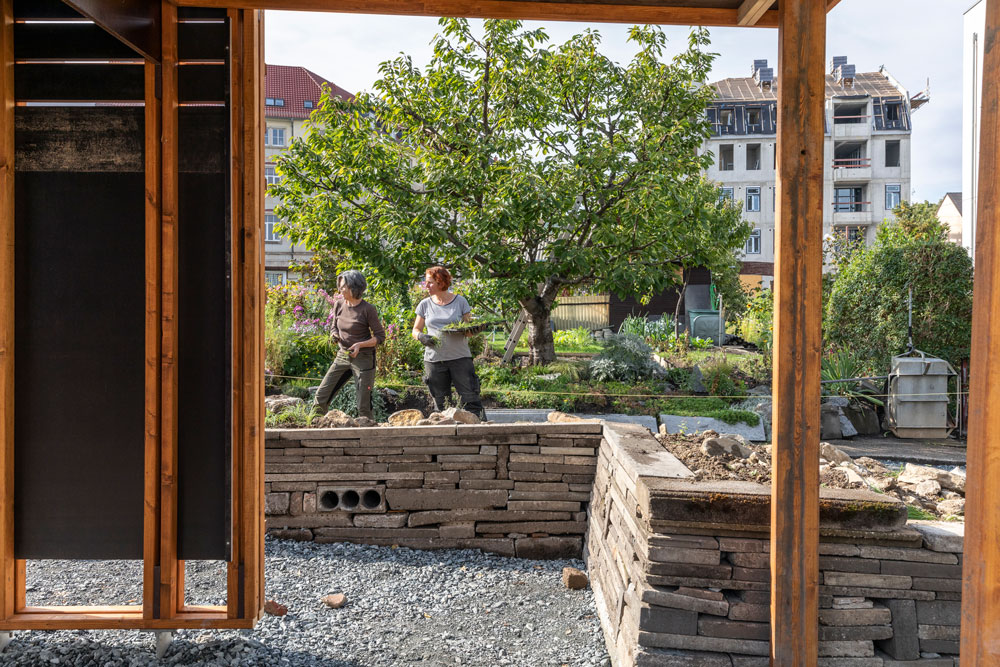 13 Helga Petzold, head of the Boselgarten of TU Dresden and Sabine Kroehs, engineer for horticulture and landscaping responsible for the technical implementation, set out the young plants.
13 Helga Petzold, head of the Boselgarten of TU Dresden and Sabine Kroehs, engineer for horticulture and landscaping responsible for the technical implementation, set out the young plants.
The arrangement in small groups of two to five plants per species was recorded in a planting plan. Underlying criteria were the even distribution of the various species on the four differently inclined planting areas, as well as the consideration of their different growth heights and compatibility with each other. Documenting the initial situation based on the planting plan allows comparisons with later conditions of colonization of the areas.
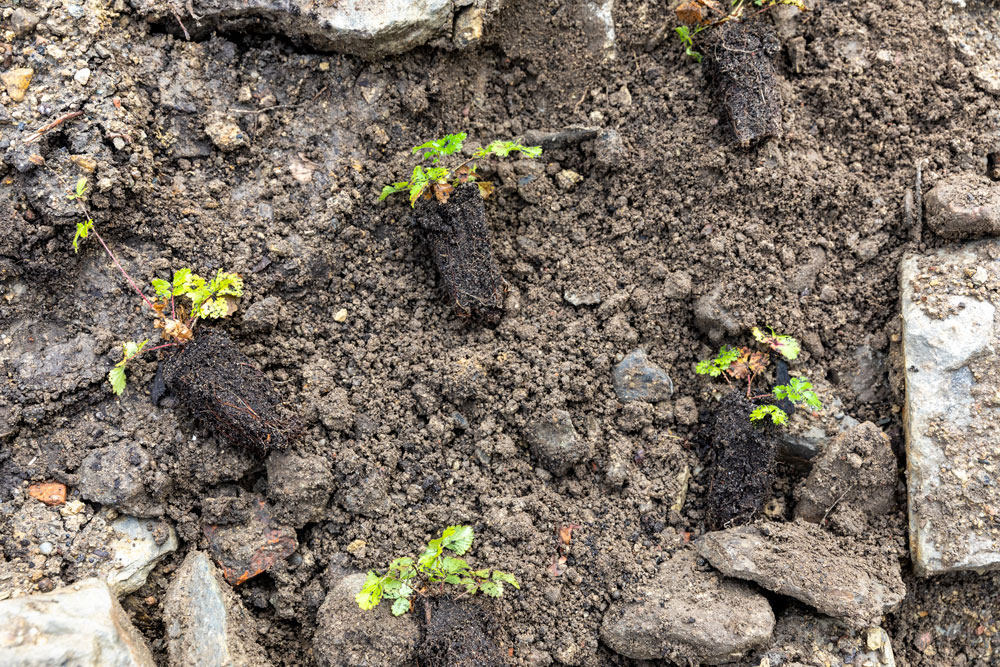 14
14
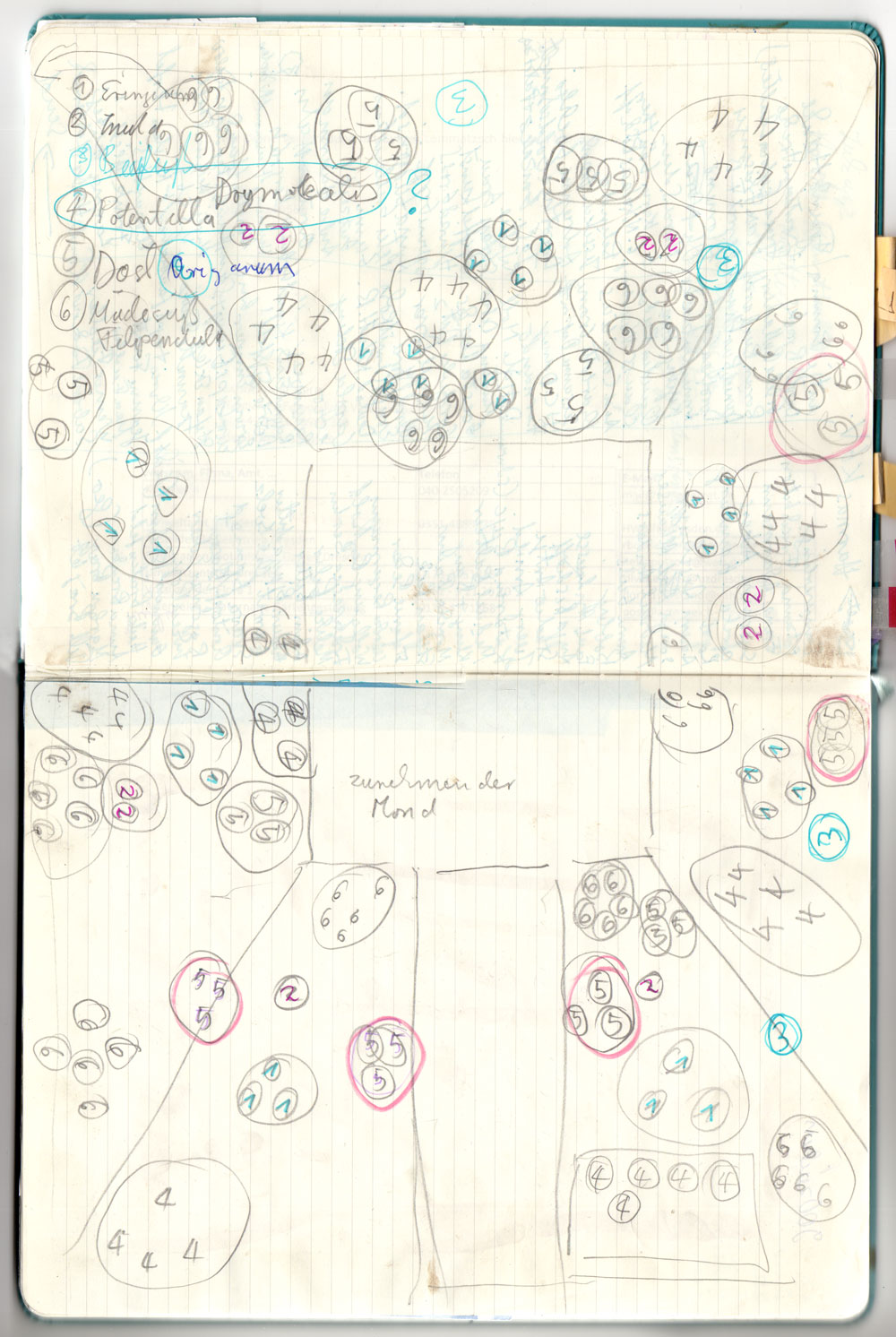 15
15
 16
16
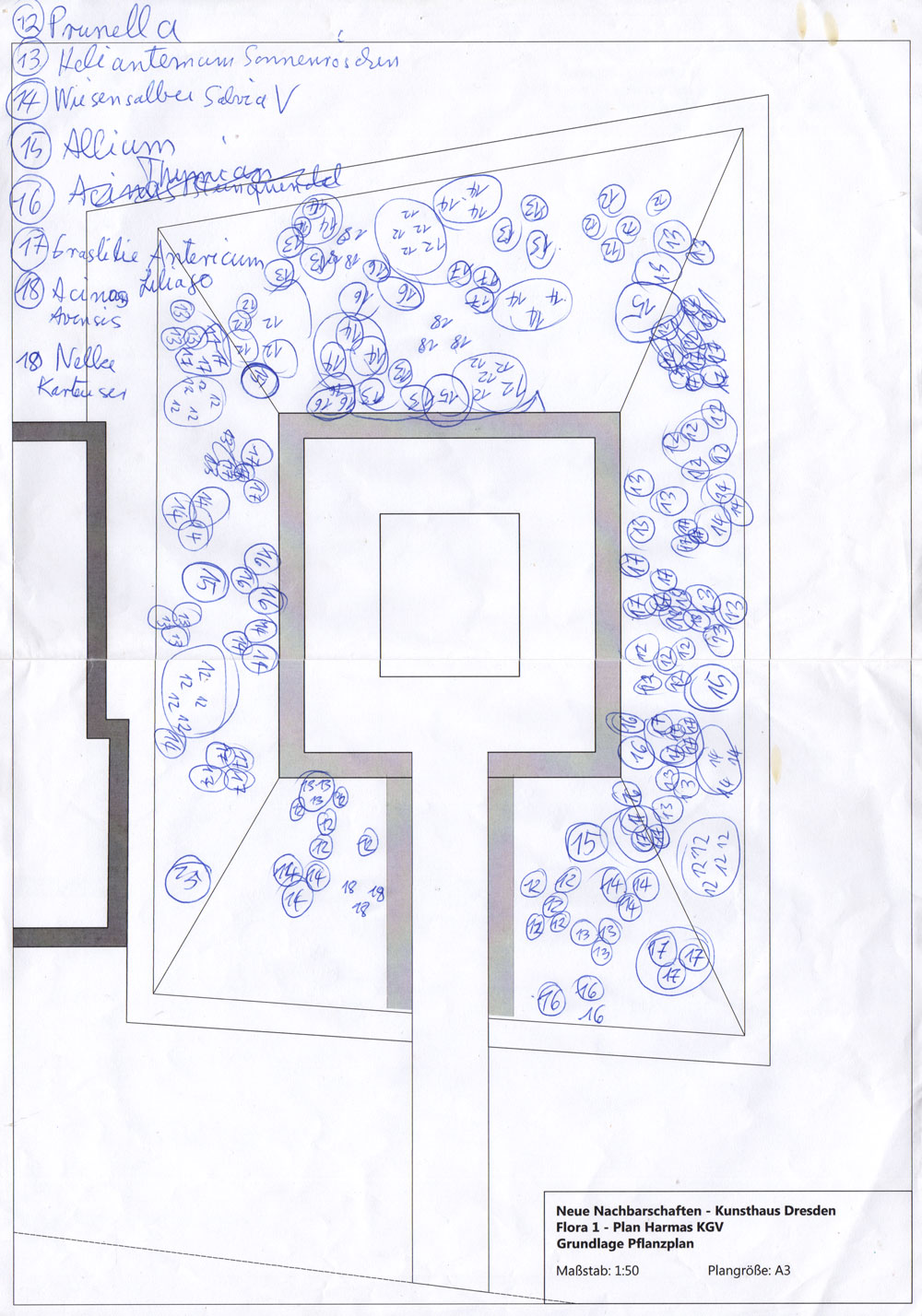 17
17
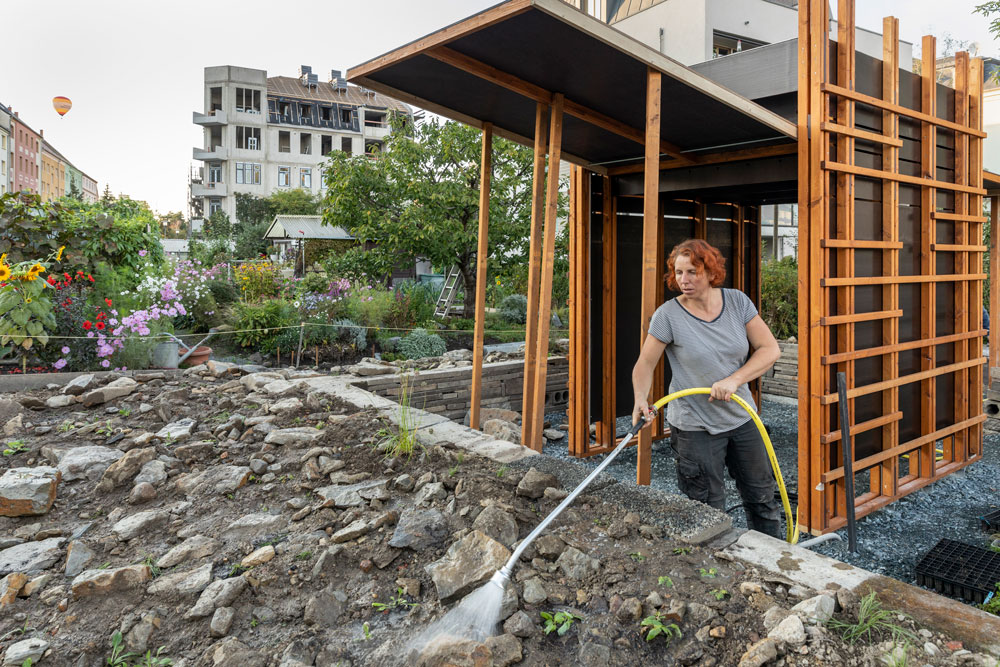 18
18
19
20
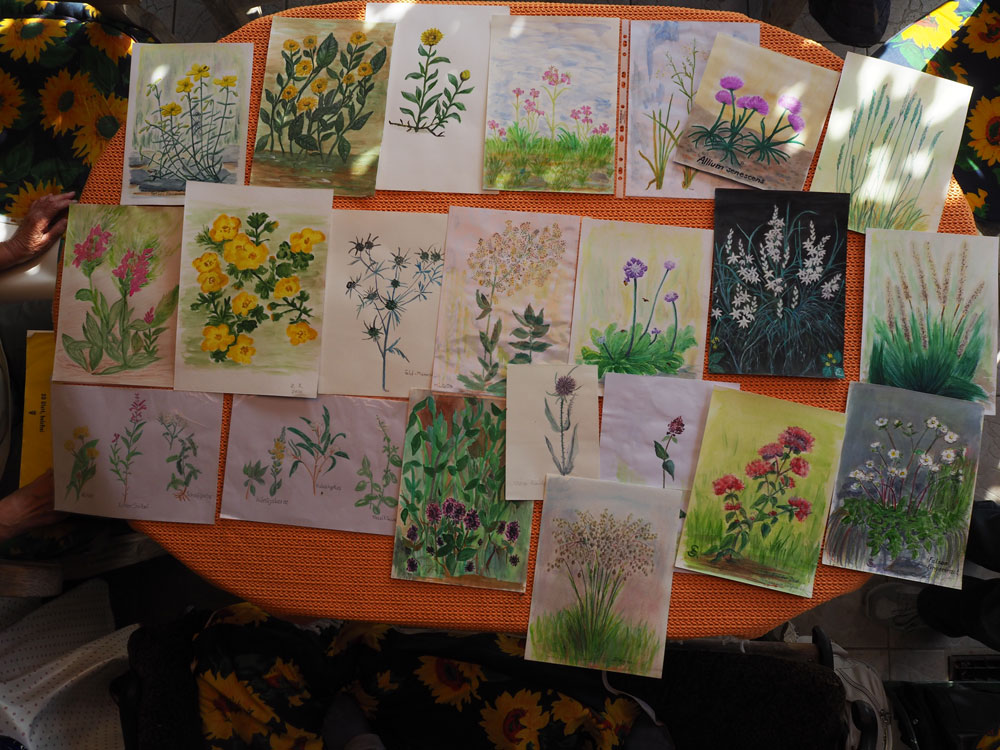 21 A painting group of allotment gardeners called Mittwochsmaler (Wednesday Painters), led by Sylvey Lommatsch, has accompanied the development of the Harmas KGV project since 2018. For the opening presentation at the exhibition pavilion, they contributed portraits of the twenty selected species.
21 A painting group of allotment gardeners called Mittwochsmaler (Wednesday Painters), led by Sylvey Lommatsch, has accompanied the development of the Harmas KGV project since 2018. For the opening presentation at the exhibition pavilion, they contributed portraits of the twenty selected species.
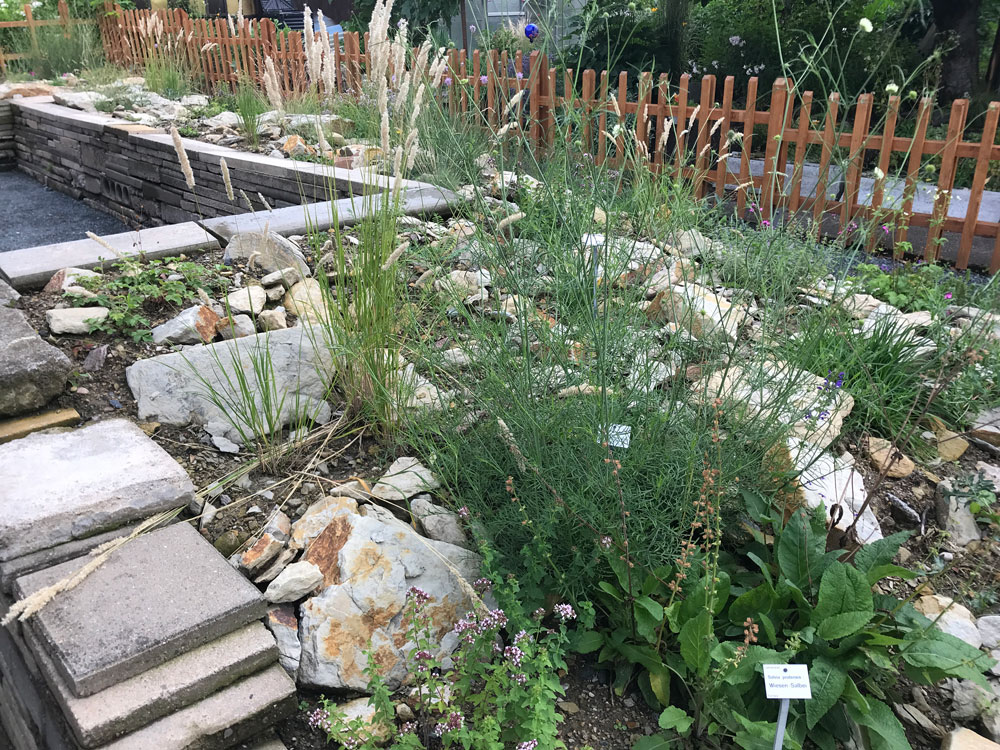 22 The rare wild herbs at the Harmas KGV developed well during the first year.
22 The rare wild herbs at the Harmas KGV developed well during the first year.
Ill. 1, 4, 6, 7, 8, 13, 14, photo: Helge Mundt
Ill. 3, photo: Harald Wolff
Ill. 9, photo: Botanical Garden of TU Dresden
Ill. 19, 20, video: Katarina Schrul
Ill. 22, photo: Florian Hüttner